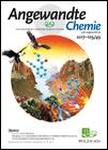版权所有:内蒙古大学图书馆 技术提供:维普资讯• 智图
内蒙古自治区呼和浩特市赛罕区大学西街235号 邮编: 010021

作者机构:Institute of Chemistry and Biomedical Sciences Jiangsu Key Laboratory of Advanced Organic Materials National Demonstration Center for Experimental Chemistry Education School of Chemistry and Chemical Engineering Nanjing University Xianlin Rd. 163 Nanjing 210023 China Jiangsu Provincial Engineering Laboratory of Advanced Materials for Salt Chemical Industry College of Chemical Engineering Huaiyin Institute of Technology Jiangsu Province Huaian 223003 China State Key Laboratory Cultivation Base for TCM Quality and Efficacy Nanjing University of Chinese Medicine Nanjing China Department of Chemistry and Biochemistry Texas Tech University Lubbock TX USA
出 版 物:《Angewandte Chemie》 (应用化学)
年 卷 期:2018年第131卷第6期
页 面:1773-1777页
学科分类:081704[工学-应用化学] 08[工学] 0817[工学-化学工程与技术]
主 题:Ammoniak Elektrochemie Hydrierungen Nachhaltige Chemie Wasserstoffspeicherung
摘 要:As a carbon‐free and sustainable fuel, ammonia serves as high‐energy‐density hydrogen‐storage material. It is important to develop new reactions able to utilize ammonia as a hydrogen source directly. Herein, we report an electrochemical hydrogenation of alkenes, alkynes, and ketones using ammonia as the hydrogen source and carbon electrodes. A variety of heterocycles and functional groups, including for example sulfide, benzyl, benzyl carbamate, and allyl carbamate were well tolerated. Fast stepwise electron transfer and proton transfer processes were proposed to account for the transformation.